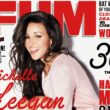Australia is the economic paradise that is among the world’s leading producers of coal, iron ore, gold, and diamonds; and has one-third of all uranium deposits. It is the 12th largest economy despite a mere 22 million population. Policies from 20 years ago have given Australians a world-best A$1.6 trillion of pension assets, and the China/India-inspired minerals boom has banished any hint of recession for more than two decades.
The exploitation of natural and financial resources and the competitiveness of compact domestic markets has helped Australian companies to punch well above their weight globally. And ‘The Lucky Country’ has always been big on media. Over the 45 years since the young Rupert Murdoch flew to London to launch News Corp’s global expansion, Australian media has profited from what is now the world’s highest per capita advertising spend (almost 50% above the US); and free-to-air television advertising revenue which almost matches that of the UK (whose economy is more than twice the size).
Power chases media
Australia is the country where the everyday importance of media has been highlighted by the power, influence and public profile of three family dynasties – Murdoch, Packer and Fairfax. They have owned almost everything across newspapers, magazines, and broadcasting. Many of Australia’s (other) most famous business people – including Alan Bond, Christopher Skase, Robert Holmes a Court, Frank Lowy and Gina Rinehart – have also chased the power and glory of Australian media. And, in the last few years, it’s been all-change again:
Television: Ownership of the three Australian free-to-air commercial networks has each changed at least three times in the past 25 years. But nobody was prepared for the tectonic shifts that followed the 2005 death of Kerry Packer. He had built PBL into the country’s dominant media business across Channel Nine TV, 9MSN online, and ACP Magazines.
Within 12 months of his father’s death, James Packer had sold most of his inherited media assets to concentrate on burgeoning casino interests. UK-based CVC private equity paid A$4.5bn for PBL Media. Packer looked like a young man in too much of a hurry to sell his birthright. But not for long.
The surprising deal was as much a story about private equity as about Australian media. The PBL sale had been signed with CVC after a secret auction, even while rival private equity firm KKR thought it had landed the business. The fact that not one but two cashed-up funders were hungry to pay a high price (12 x EBITDA profits) for PBL shows how mad things were getting before the 2008 global financial crisis hastened the systemic decline of traditional media and much more besides.
CVC partners were confident about the possibility James Packer would eventually buy back his media businesses in the way that his father had 15 years before bought back his beloved Nine Network from Alan Bond. But they miscalculated, not least by identifying the son with Kerry’s passion for media. They even misinterpreted James Packer’s insistence on retaining PBL’s ‘new media’ investments in pay TV. He had long been a digital-savvy sceptic of traditional media and knew exactly what he was doing to maximise the ultimate proceeds.
Private equity fiasco
CVC, for its part, chose not to consider the irony that Bond’s 1987 super-priced purchase of Channel Nine had contributed to his eventual bankruptcy and led to Kerry Packer buying it back for some 25% of the original price. Like few before him, the local CVC chief wanted people in 2006 to know he had bested a Packer. And the bullishness seemed, momentarily, to be endorsed by KKR’s anger at losing out.
The US firm acted quickly to get back at James Packer, and took its deal, documents and cash over to the Seven Network. KKR then rushed to sign a lookalike A$4bn transaction with Australia’s second largest TV-magazines-online group. But that’s where the similarity ended. Within months, it was clear that both CVC and KKR had paid peak-market prices. But only PBL had been operating right at the top of its margins and profitability. The Seven Network still had room to grow – at the expense of its larger rival. And exiled former PBL executives were on hand to help deliver the transformation.
Within a year, PBL’s Channel Nine flagship television had lost the ratings leadership it had held, almost uninterrupted, for more than 40 years. And, amid worldwide turmoil in magazine sales and advertising, ACP profits plummeted, eventually to one-third of their peak. The whole PBL business had lost its mojo and was soon seen to be worth only 50% of the purchase price.
The upshot was that CVC lost some A$1.8bn of its investment equity and was forced to bail-out after selling ACP Magazines to Bauer Media for little more than one-third of its original value. But, despite the digital upheaval, KKR got its revenge and managed to break-even on its own high-priced flirtation with Australian media.
In the post-Packer merry-go-round, Seven started second and came in first.
James Packer’s (almost final) exit from media came in 2012 with the A$2bn disposal to Rupert Murdoch’s News Corp of his Consolidated Media Holdings’ shares in pay TV leader Foxtel and Fox Sports.
Foxtel now has 2.5m subscribers and revenues of $3bn, with EBITDA margins of 30%. Its 14% churn rate – ahead of ramped up online services from Netflix et al – might worry its joint owners, telco Telstra and News Corp (whose Australian holdings were kept intact in “new” News Corp, while its pay TV elsewhere was shifted to 21st Century Fox). But not nearly as much as the fact that both companies share competing ‘triple play’ strategies for phone, internet and TV. What chance of a marriage or divorce for Telstra-News Corp Australia?
The Packer name lingers in media with a shareholding in Channel 10, Australia’s third network whose most profitable days (of screening The Simpsons in the 1990s) are now as distant as the pre-internet days when under 25s watched much network television. Lachlan Murdoch is Ten chairman and a shareholder – along with Australia’s richest person, mining empress Gina Rinehart – in the channel which is now seeking older audiences and a profitable future.
Newspapers: Australia’s ownership concentration of newspapers is among the world’s highest and is divided largely between News Corp and Fairfax Media, the listed company which was a 1990 casualty of family feuding and a leveraged buy-out. Next, Fairfax famously lost its “rivers of gold” classified ad revenues to digital operators, variously backed by the Murdoch or Packer families: Seek (jobs), Carsales, and REA (property). The newspaper group actually passed up the chance to acquire each of these digital operators. It decided, instead, to invest disastrously in Rural Press newspapers. Fairfax, whose profits have fallen from A$369m in 2008 to just A$129m in 2013, is now fighting for its independence – and for the continuing
existence of its flagship dailies Melbourne’s The Age, the Sydney Morning Herald and the Australian Financial Review.
Fairfax has not been killed by the digital adventures of Messrs Packer and Murdoch (as foreshadowed in a recent book, right). But things are not looking good. Its recent disposal (for a price that was hyped by under-stating historic investment levels) of Stayz, a successful online holiday rental site, bears all the signs of a parent company that is fighting fires rather than building a future.
It’s a situation that is far from lost on the largest shareholder Gina Rinehart who holds a hostile 14.9% stake in Fairfax and is predicted – eventually – to bid.
Australian newspapers also find themselves competing fiercely with online offerings from their UK peers. In what looks suspiciously like a ‘what if’ experiment for its loss-making London-based newspaper, the charity-owned The Guardian has established an online-only Australian edition. And next comes a local edition of the world’s largest newspaper site, the UK-based MailOnline – being launched in conjunction with Channel Nine in 2014. More localised news services can expected from the Huffington Post, the soaring BuzzFeed, and the New York Times. Real challenges for troubled Australian newspapers.
The 2013 News Corp split off from 21st Century Fox revealed stunning information about the Murdoch performance in Australia that had previously been hidden within the much larger US-based parent. Its newspaper advertising revenue last year dropped by A$383m – much worse than the Fairfax metropolitan dailies. Observers also noted that News Corp Australian earnings featured some creative accountancy including a huge paper profit booked as a result of the digital TV purchases from James Packer. News Corp treated the price that it paid for Packer’s Consolidated Media Holdings as revaluing News Corp’s existing stakes in Fox Sports and Foxtel – producing a A$1.2bn profit without which News Corp Australia would have been loss-making.
Meanwhile, seemingly above the fray, Australia’s most profitable daily is Seven West Media’s 181-year-old The West Australian. Its $86m profits and 35% EBITDA margins make this Perth-based media powerhouse probably the world’s most successful newspaper.
Magazines: Australia’s largest magazines have long had circulations to match those of the similar newsstand market in the UK, despite the 1:3 disparity in population. The one-time 1million copy sales for the legendary Australian Women’s Weekly (a monthly magazine) and similar scores for the leading weeklies have been partly due to disproportionately high sales but also to the lack of fragmentation in another Australian sector dominated by a few large players.
Australian Women’s Weekly is today selling some 460,000 copies – still up with its equivalent in the UK. Australia’s celebrity-packed weeklies like Woman’s Day and New Idea, which once each sold more than 750,000 copies, are struggling to sell half of that, shredded by competition from Twitter, MailOnline, and YouTube. Even, for the core women’s lifestyle monthlies, copy sales have fallen by 18% in four years and are two-thirds down across the last decade. A familiar story for magazines everywhere.
CVC’s sale of ACP Magazines to the secretive Hamburg-based Bauer Media for A$500m in 2012 highlighted the decline of the country’s longtime leading magazines group. ACP’s profits and margins had frequently been higher than those of its UK equivalent IPC Media. But under-investment – and a plethora of joint ventures and licensing deals – had taken their toll on profits as copy sales and advertising fell away.
The ACP deal, coming five years after Bauer’s acquisition of the former EMAP UK magazines and radio group (and 10 years after secret EMAP negotiations to acquire ACP itself), made it probably the world’s largest magazine publisher. It was a major change for the privately-owned German business which had grown rich on the formulaic launch in US and European markets of a handful of content-rich, advertising-light magazine formats.
That, and the generation-jump to thirty-something heiress Yvonne Bauer marked a change in approach as the magazine-obsessed company proceeded to close more Australian brands in the first 12 months than in five years across its entire worldwide group. Meanwhile, the longtime try-harder, no.2 player Pacific Magazines (owned by the Seven Network) took full advantage of its competitors’ woes with fleet-footed strategies that have given it three of the country’s five largest magazines, a closing-the-gap 33% market share and 14% profit margins. Pacific’s Better Homes & Gardens continues, alongside the BBC’s Top Gear, to be one of the world’s most successful TV-magazine cross-brands.
And the winner is…
The undoubted winner from all that Australian media activity – so far – is a former orphan who left school aged 14.
This is Kerry Stokes, whose first brush with media was in a starter job installing TV aerials in Perth, before moving into property development and, ultimately, making his fortune from the West Australian franchise for Caterpillar. The rags-to-riches story is a real break with Australia’s longtime media dynasties.
Not only is Stokes 100% self-made but he is also based in Perth. The capital city of West Australia has, to say the least, been enriched by the minerals boom of the past 20 years: its economic growth rate has frequently been some 50% ahead of Australia as a whole. This is part of the ‘new Australia’ challenging the traditional centres of Sydney and Melbourne for power, influence and money.
The main driver of Stokes’s wealth remains WesTrac, his earth-moving business based around the Caterpillar franchise. But “earth-moving mogul” doesn’t quite attract the same attention as “media mogul”. And Kerry Stokes is, arguably, now Australia’s most powerful media proprietor.
His Seven Group Holdings owns 33% of the quoted Seven West Media whose assets include:
- Seven Network, Australia’s leading free-to-air TV channel
- 33% share in Sky News Australia
- Pacific Magazines, the second largest magazine publisher
- West Australian, the country’s most successful newspaper
- 50% of Yahoo!7 digital services
- West Australian radio stations and regional newspapers
Seven West Media last year made EBITDA profit of $480m on $1.9bn revenues, two-thirds coming from TV and the rest split broadly between magazines and newspapers.
Stokes has come a long way since 1995, when the then Australian Prime Minister Paul Keating said: “I don’t have to deal with the Kerry Stokes of this world. He’s a bit below my speed.” Now, in a country where prime ministers have forever seemed preoccupied with media ownership, the so-private Kerry Stokes certainly has the attention of Australia’s movers and shakers.
Not so “Little Kerry”
After years of being tagged “little Kerry”, with businesses dwarfed by the late Kerry Packer, he now sits astride the Australian media industry as the country’s 12th richest person with a fortune estimated at A$2.5bn. His achievement in turning Seven Network into a TV market leader and in substantially closing the gap in magazines (even in unpromising times) is almost symbolic because it has been all about overhauling businesses formerly owned by the formidable Kerry Packer. Stokes did not just steal the longterm leadership from Channel Nine but did so with a management team of key ex-Packer executives. The same is true of Pacific Magazines.
Same people, same media but much else is different. Stokes has had a few proprietor moments of pulping magazines and scrapping TV programmes, but nowhere near the sound and fury that Aussies have come to expect from their media moguls. He seems disinterested in throwing his weight around, doesn’t shout, and told one journalist: “I don’t believe I have power. If I did, I might be tempted to use it.”
And, for all his media success, insiders say Stokes does not have the passion for newspapers, magazines or television that had characterised the Packer, Fairfax and Murdoch era in Australia. At a time when media dynasties everywhere are finding it tough to survive, that might just help him bring much-needed objectivity to the Australian market.
Channel Nine has recently – and implausibly – predicted the longevity of network television in an IPO prospectus that forecast it would still be dominant in 10 years. That seems to fly in the face of viewing trends and even Nine’s own plans to launch online streaming, initially with subscription movies-on-demand. Seven West, by contrast, seems ready to address the challenges of online viewing, and is testing its “hybrid broadcast broadband” service imported from Germany. But it’s a troubling new world that requires strategic vision, serious investment and the willingness to risk current revenues in pursuit of reinvention.
With the Australian analogue TV signal being switched off at the end of 2014, the arrival of much-needed faster broadband speeds, the impending launch of Netflix, and an explosion in catch-up TV and viewing on tablets, the market is bracing itself for an explosion in international competition. And they’ve noticed how, after a year or so in the UK, Netflix has already been able to attract more than 1.5m subscribers paying £5.99 per month – despite the strength of subscription film channels on cable and satellite.
Australian movie streaming service Quickflix disclosed recently a 20% growth in viewing hours by its 110,000 subscribers: “We’re doing well over a million hours of movie and TV streaming a month, and there is a lot of action hitting the internet video scene in Australia next year.”
All you know is that the fusion of online and broadcast through set-top boxes and the iPad gives smaller services the ability to challenge their entrenched major broadcast rivals. It will open up the Australian market more fully to global TV-like channels on YouTube, especially for younger audiences. In a country where the main broadcasters have had captive viewers and advertisers, it is clear there will be much more choice.
Recent managerial shuffles imply that Seven West Media will step-up its online activity and increasingly create multimedia digital channels using magazines, TV and even newspaper brands. Over this next 12-18 months, it may be expected to to develop all-media services, possibly including the following:
- Multimedia news, entertainment and social networking in its West Australia heartland, as a prototype for nationwide roll-out
- Further development of the West Australian’s “Point & Pay” and Pacific Magazines’ “Netpage” to enable online response, sharing and purchasing by smartphone from hard copy content
- Online channels linking TV news with an international provider, perhaps Huffington Post or BuzzFeed; and further development with its rejuvenated online partner Yahoo, which has recently signed up US news star Katie Couric as “global news anchor”. There are persistent rumours of a possible Seven break-up with Yahoo. But this may imply either a renegotiation – or a new online initiative with a local or international partner. Something has to happen.
- Online movies on demand
- Specialist online TV channels linked to Pacific’s magazine brands
- Channel development with the UK’s leading commercial broadcaster ITV (a one-time Seven shareholder), with whom Seven recently renewed its long-term deal giving the Australian broadcaster access to a wide range of UK programmes.
Beyond that, many Australian media observers expect a change in the ownership of Fairfax. And who better to co-operate with the feisty Gina Rinehart than fellow Perth billionaire Kerry Stokes? The possibility gains traction with Seven West’s newest non-executive director who was formerly CEO of PBL and a director of Fairfax. A Seven West-Fairfax combination could become a formidable multimedia player on the domestic and global stage.
It’s the kind of broadcast-newspaper-digital consolidation that makes obvious good sense – but still finds ready opposition in most countries. In Australia, Rupert Murdoch will be the primary opponent. He understands very well the possible synergies across news and entertainment: that’s exactly what he wanted to achieve in the UK with his proposed 2012 takeover of pay TV giant BSkyB before it was derailed by phone hacking scandals. Those same scandals, now being played out in protracted London criminal trials, might just give Seven West the edge in any public stoush. Just watch this experienced team start to accelerate in 2014.
The Australia of entrenched domestic media companies is changing. And the search for consolidation and digital reinvention may have no better advocate than the low-ego Kerry Stokes. It’s set to be a big year.




